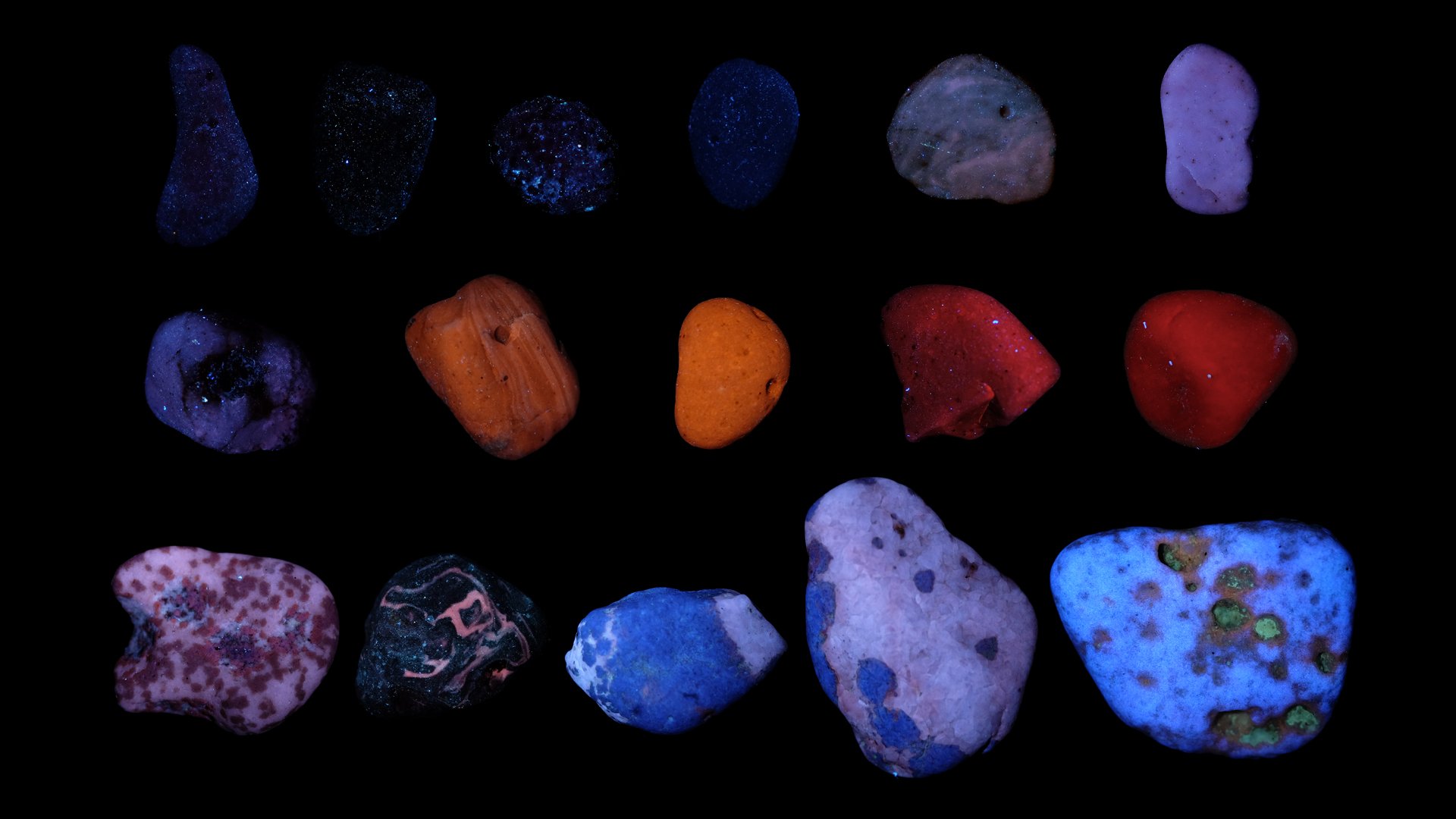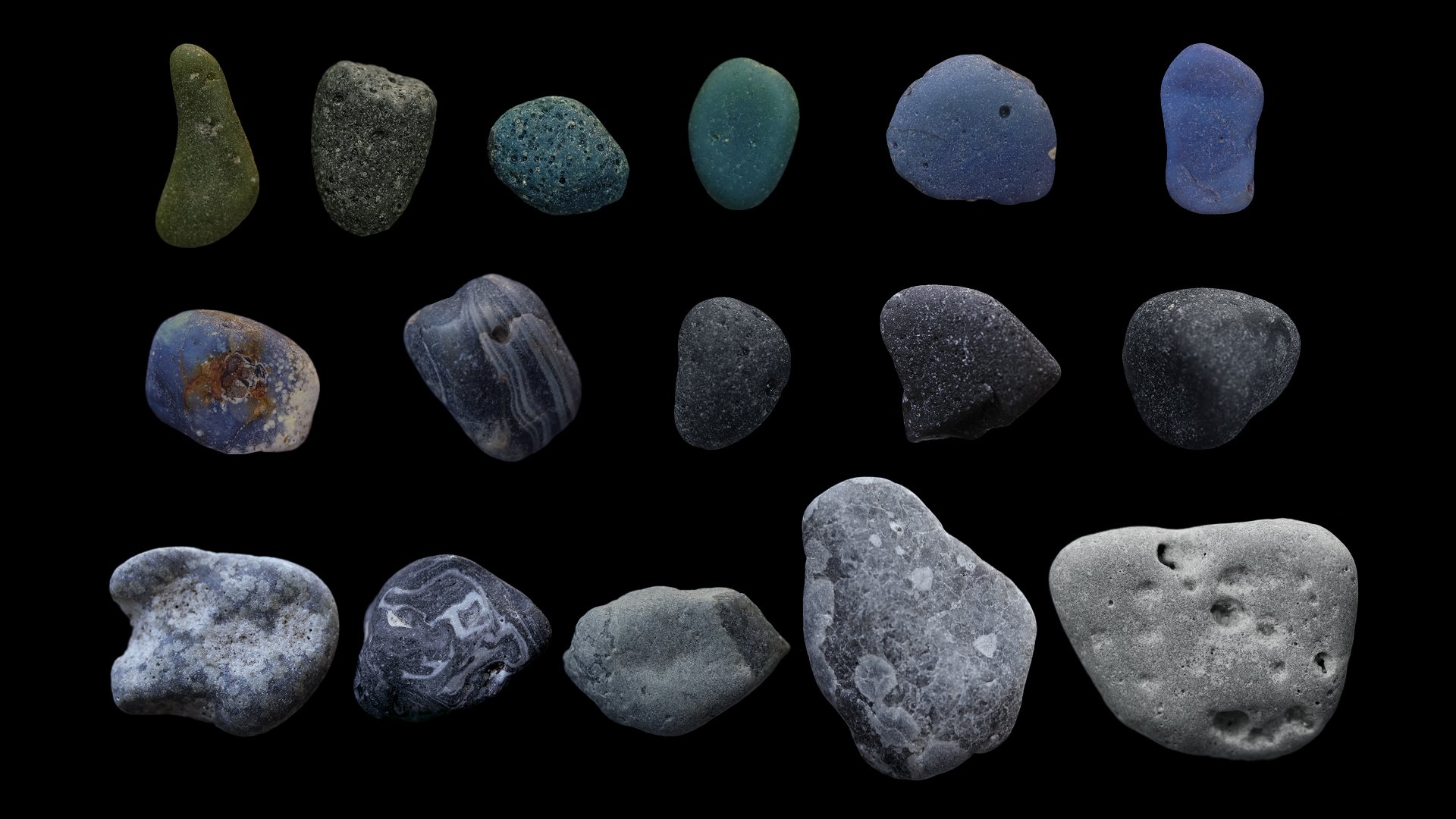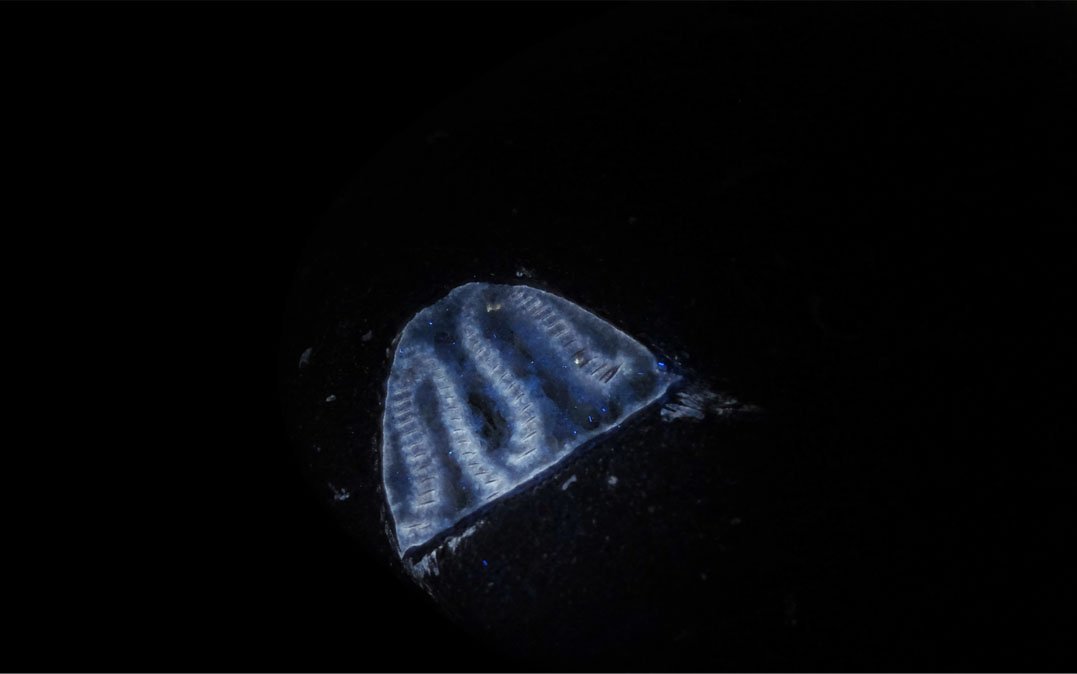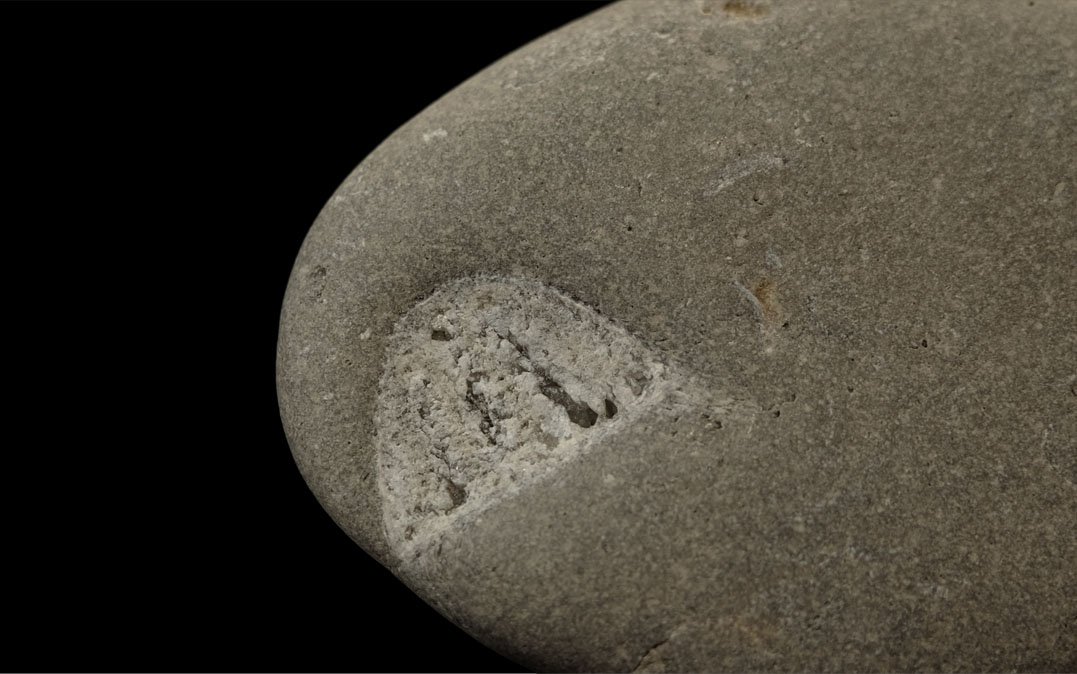The Blues After Dark: The Fluorescent Secrets of Leland
There’s a newly recognized treasure waiting to be found and it’s a secret no longer. On the shores of Van’s Beach in Leland, Michigan, dozens— sometimes hundreds— of rockhounds scour the sand and stones for the beautiful slag known as Leland Blues. These richly colorful byproducts of historical smelting operations are prized for their stunning beauty and bold blues, greens, and purples. When the sun sets, however, folks return home. There’s nothing at all to find in the dark out there when you can’t see the bold hues you’ve come to seek out.
And so everyone goes home and there on the beach remain thousands— millions in fact— of secret treasures that were ignored by every visitor under the sunlight just a few hours ago. But for the intrepid hunter equipped with a good 365nm UV light, this secret treasure is waiting for you.
Amidst the sand and stones lie countless pieces of dull boring slag glass. Pieces that most folks wouldn’t even recognize as slag if they bothered to pick them up. Often dull gray or maybe just barely purple under the sun, these weathered pieces of historical garbage are tossed to the side in the eternal search for the perfect bold Leland Blue. But in the dark, under the glow of 365nm UV light, these discarded pieces radiantly shine.
Rich blues and stunning purples— streaked and polka dotted— pop from dull colorless stones most people wouldn’t know were slag. Reds, pinks and yellows practically burst from the sand under the UV light. Under visible light, these pieces are dull and nothing special at all.
The infamous fluorescent sodalite of our shores, commonly going by a raft of names such as yooperlite or glowdalite among others, is similar in that regard. These rocks are usually dull and completely uninteresting under visible light, but shine brilliantly under the 365nm UV light. In exactly the same way, it is the dullest of the dull Leland Blues that shine brightest under the UV light while the most gorgeous pieces under daylight can look dullest under the UV!
That feature— the fact that the least sought after pieces during the day can become the most sought after at night— means these fluorescent slag are an untapped resource on the shores of Leland.
And fluorescent slag is not all you’ll find out there under a UV light.
Calcite shines a bright white and fossils that are barely visible at all during the day become stunning and vibrant under the UV. Chert, which is often mistaken for Leland Blues because of the coating of blue manganese that can cover its weathered surfaces, fluoresces a bright red under the UV as the manganese lights up the night.
Fluorescence isn’t all you’ll find on the shores of Leland; you can also find phosphorescent calcite in abundance. Phosphorescence is the ability of a material to hold onto the energy it absorbs from light and continue releasing light even after the UV light is removed. It is true glow-in-the-dark, continuing to shine for a few moments after the light source is turned off. In Leland, calcite that shines a bright white under the ultraviolet often phosphoresces. Shine a UV light on it for several seconds and then abruptly turn off the light. You may find that your calcite continues to glow for several seconds in your hand.
And after all of this, it is worth noting that Leland’s shores also host fluorescent sodalite (aka yooperlites or glowdalites, etc…) that shine a bright orange!
A Leland Yooperlite, Photo Credit: Cody Wiedenbein
The source of this fluorescence in sodalite is disulfide, a variety of sulfur in the mineral. Interestingly, it is also the variety (oxidation state) of sulfur in the slag that causes Leland Blues to appear so boldly blue and green. It is very likely that this self-same sulfur is the source of much of the fluorescence we see in this material. Other colors that appear under the UV light, such as blues and purples, may be due to other fluorescent impurities in the slag, such as lead. As mentioned above, calcite appears white and the manganese coating on chert can shine red.












